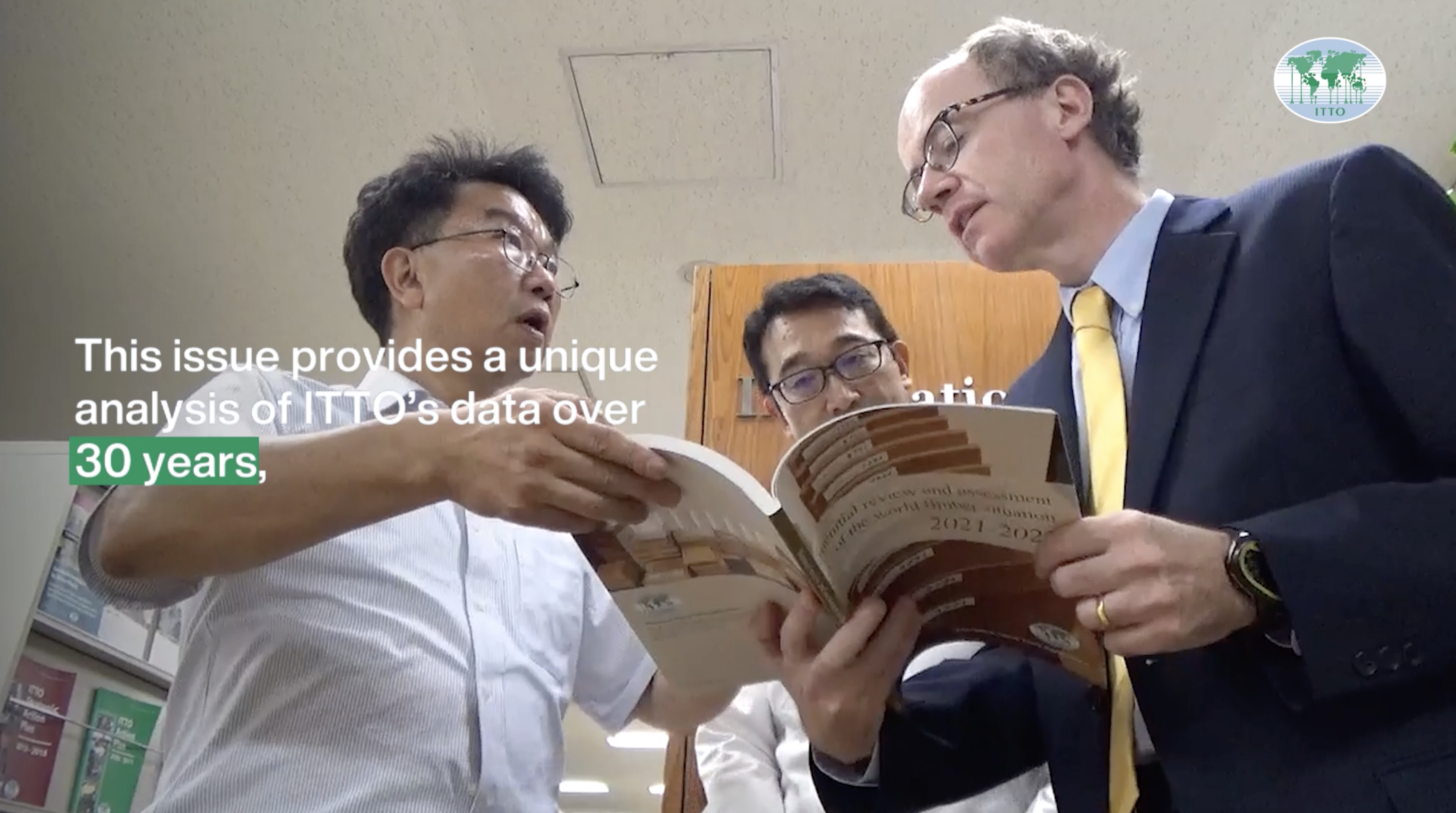New report on trends in tropical wood sector finds huge change since 1990—and remarkable resilience
18 October 2024

Log transportation in West Kalimantan, Indonesia. Photo: Herry Prayitno/APHI
18 October 2024: The tropical wood product sector has survived three major economic shocks —the Asian financial crisis, the global financial and economic crisis, and the Covid-19 pandemic—in the last three decades, and many tropical producer countries have emerged as value-added players in the export trade, according to a new ITTO report examining long-term trends in the sector.
The report, Tropical Timber Trends: A Review of Tropical Timber Production, Consumption and Trade, 1990–2020 written by timber-sector trade and market analyst Frances Maplesden, analyzes and summarizes ITTO’s core statistical data over the three decades to 2020, thus constituting an essential overview of long-term developments in the tropical timber sector.
According to the report, the sector has been shaped since 1990 by complex interactions among numerous factors that have influenced production, consumption and trade. Global economic shocks associated with the Asian financial crisis in 1997–1998, the global financial and economic crisis (GEC) in 2008–2009 and the COVID-19 pandemic in 2020–2022 have had significant impacts on global timber consumption patterns, although production levels recovered within three to five years after the Asian financial crisis and the GEC.
“The GEC accelerated a shift in the consumption of tropical wood products away from the European Union and the United States and towards Asia, especially China and India,” Ms Maplesden said. “In many tropical countries, too, production has been declining in natural forests and increasing in plantations. These and other trends represent quite profound changes in the sector, which nevertheless has shown considerable resilience and adaptability.”

Watch the interview with ITTO's Jean-Christophe Claudon about the Technical Series 52: Tropical Timber Trends and learn why ITTO publishes this kind of report.
China has also emerged as a major player in the tropical timber sector. For example, it accounted for only 0.5% of world tropical plywood production in 1990, but this had leapt to more than half (57%) of global production by 2021. According to the report, this extraordinary expansion was mainly in response to rapid growth in domestic plywood demand in China’s downstream industries, such as building construction, wooden furniture manufacturing, automobile manufacturing and shipbuilding.
The value of secondary processed wood products has also risen dramatically, from USD 1.7 billion in 1990 to USD 36.1 billion in 2022. This growth is indicative of how the tropical timber sector has matured over the last three decades.
“Most countries were exporting mainly low-value-added products such as industrial roundwood or sawnwood back in the 1990s,” said Ms Maplesden, “but many have now shifted towards the production of higher-value-added products such as furniture. Some tropical countries have emerged as major value-added players.”
According to the report, factors that have affected the competitiveness of tropical exporters over the last several decades and continue to influence it today include exchange-rate volatility; rising production and transport costs (which have pushed up prices); product differentiation and supply-chain responsiveness; technological developments that have enabled substitution by other wood products and materials; requirements for certification in some consumer markets; and trade restrictions imposed on certain tropical timber exporters and products.
ITTO Executive Director Sheam Satkuru said the report shows the importance and value of ITTO’s statistical work.
“The analysis offers an excellent birds-eye view of the changing dynamics of the tropical timber sector,” she said. “This is crucial for understanding long-term trends in the sector and the impacts of economic shocks, policy interventions and market shifts.”
“ITTO’s Statistical Database contains consistent data collected over more than 30 years,” Ms Maplesden said. “It’s the world’s only global database on tropical timber production and trade, and this makes it a very valuable resource for the development of policies that are conducive to a sustainable tropical timber sector.”


